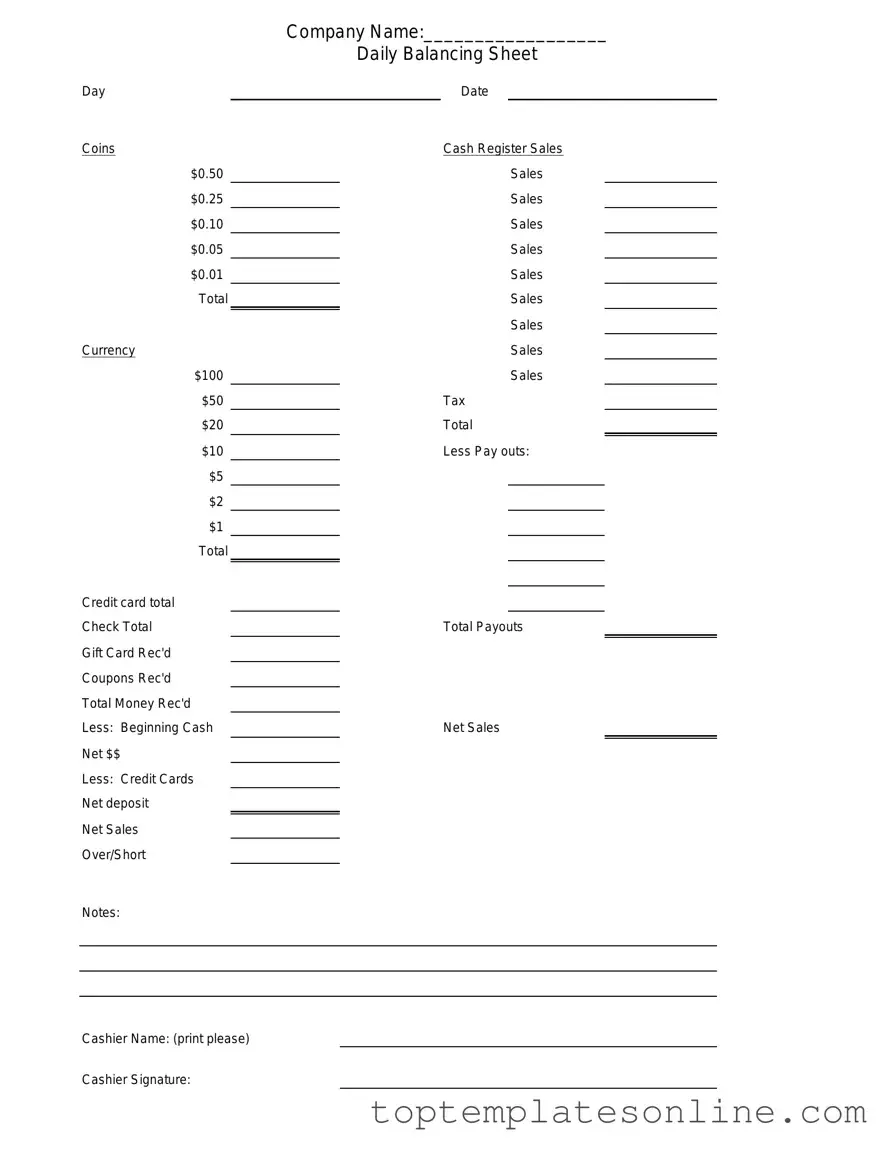Fillable Cash Drawer Count Sheet Form
The Cash Drawer Count Sheet is a financial document used by businesses to record the amount of cash present in a cash drawer at the end of a shift or business day. This form helps ensure accountability and accuracy in cash handling, providing a clear record for reconciliation purposes. By documenting cash totals, discrepancies can be identified and addressed promptly.
Customize Cash Drawer Count Sheet Here
